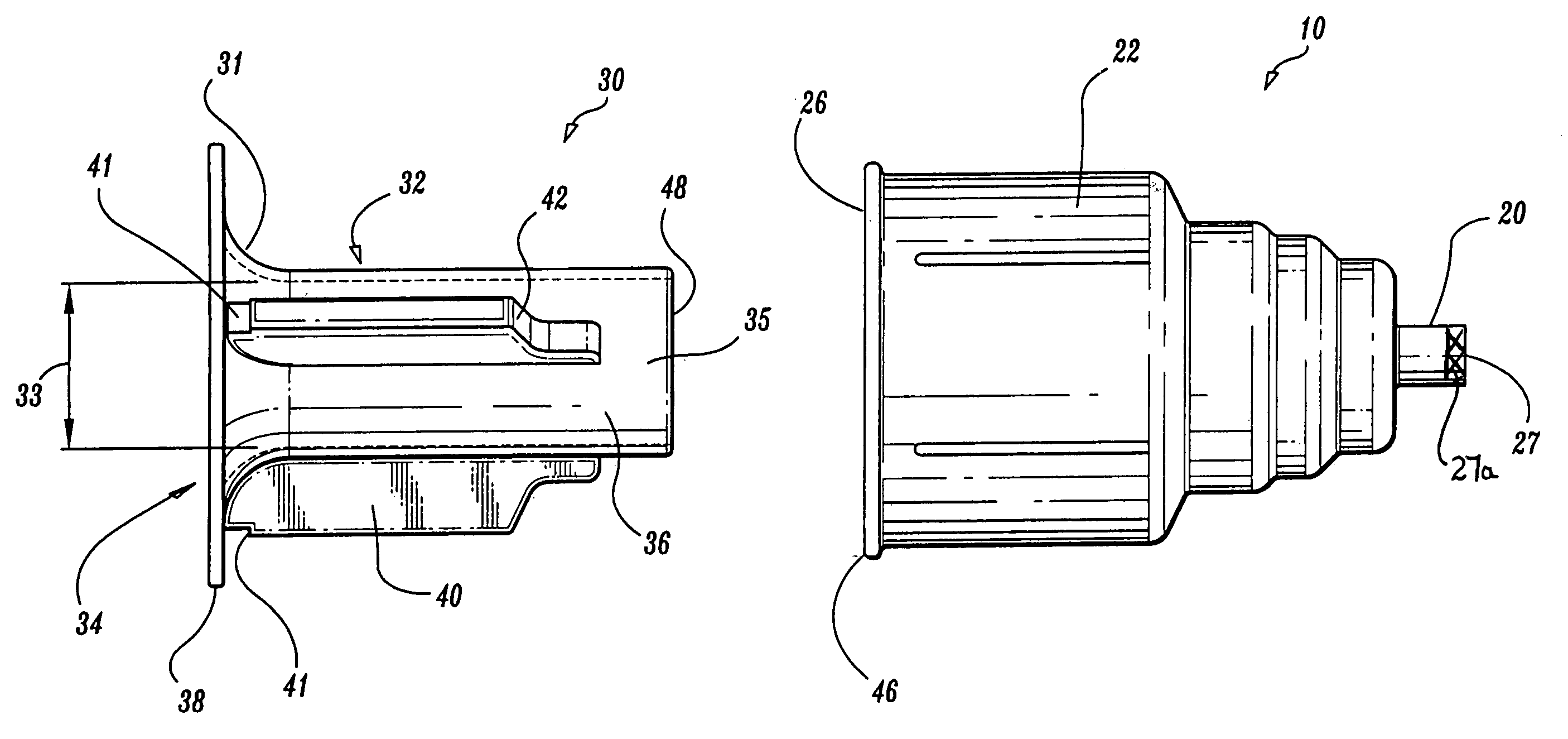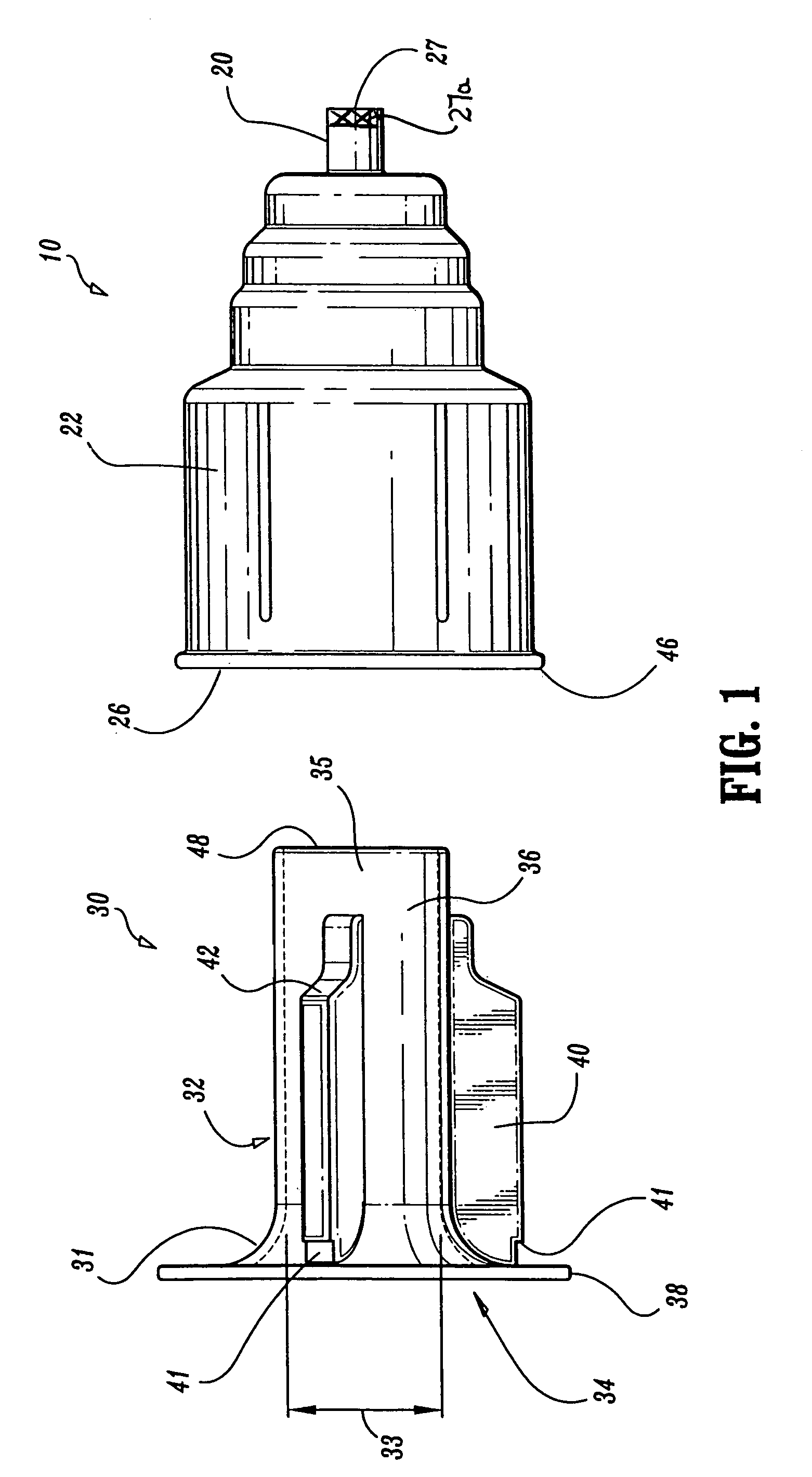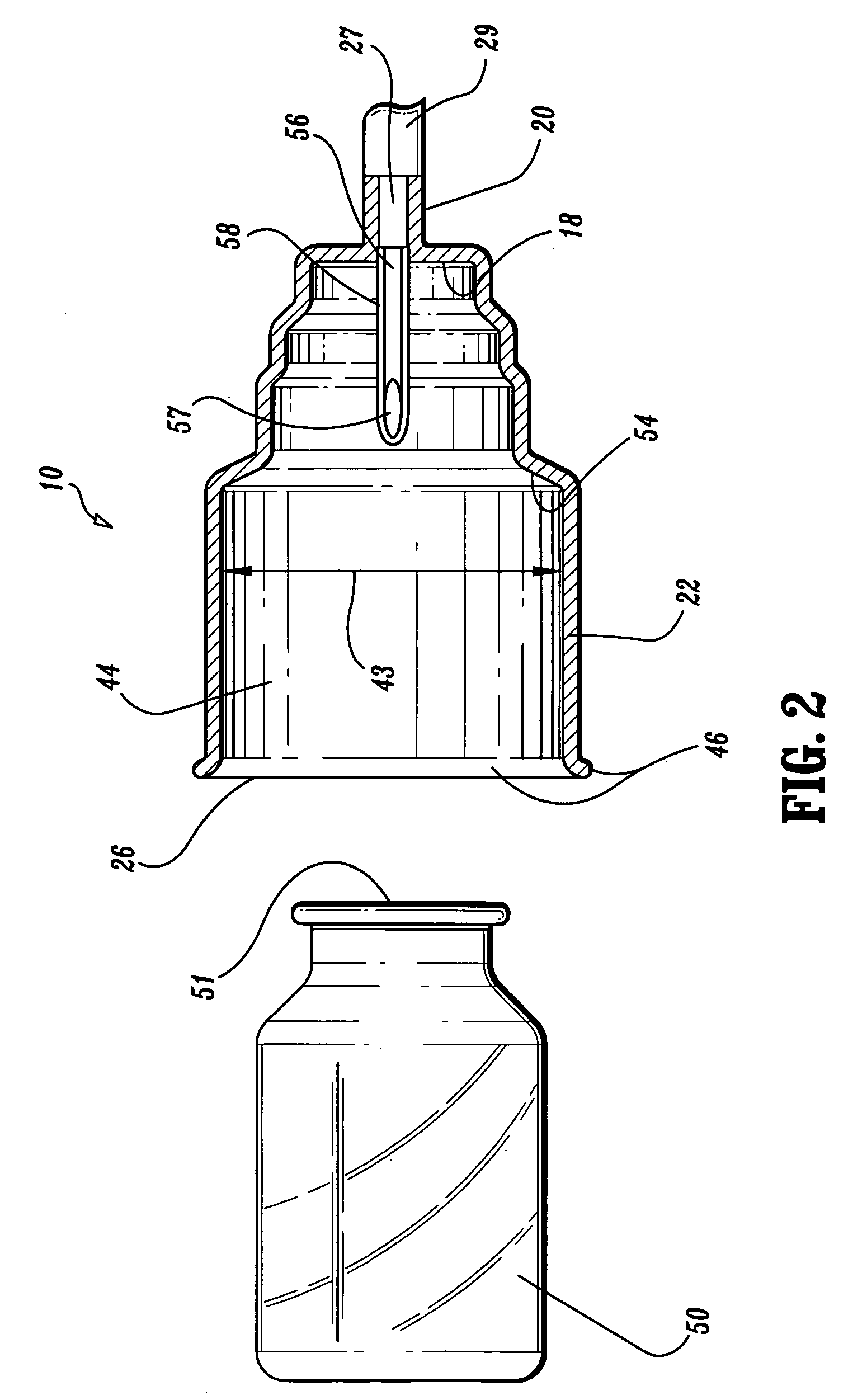Transfer needle safety apparatus
a safety apparatus and needle technology, applied in the field of medical fluid transfer devices, can solve the problems of health care workers who handle fluid samples and collection devices are routinely exposed to dangers, health care workers are exposed to serious risks, and the rubber sheath of multiple collection devices does not protect health care workers from accidental needle stick injuries, etc., to achieve the effect of safe transfer of body fluids
- Summary
- Abstract
- Description
- Claims
- Application Information
AI Technical Summary
Benefits of technology
Problems solved by technology
Method used
Image
Examples
Embodiment Construction
[0038]The present invention will be described in detail with respect to blood collection applications with the understanding that embodiments of the present invention are directed to various other fluid transfer applications as well.
[0039]In the discussion that follows, the term “proximal” will refer to the portion of a structure that is closer to a practitioner, while the term “distal” will refer to the portion that is further from the practitioner. As used herein, the term “subject” refers to a human patient or other animal. According to the present disclosure, the term “practitioner” refers to a doctor, nurse or other care provider and may include support personnel.
[0040]Referring to FIGS. 1-4, a transfer needle safety apparatus includes a shield 10 having a wide diameter proximal end side-wall 22 defining cavity 44. The cavity 44 has a rim 46 defining a substantially full diameter proximal opening 26. The cavity 44 also has a narrower diameter distal end wall 18 with an open tub...
PUM
 Login to View More
Login to View More Abstract
Description
Claims
Application Information
 Login to View More
Login to View More - R&D
- Intellectual Property
- Life Sciences
- Materials
- Tech Scout
- Unparalleled Data Quality
- Higher Quality Content
- 60% Fewer Hallucinations
Browse by: Latest US Patents, China's latest patents, Technical Efficacy Thesaurus, Application Domain, Technology Topic, Popular Technical Reports.
© 2025 PatSnap. All rights reserved.Legal|Privacy policy|Modern Slavery Act Transparency Statement|Sitemap|About US| Contact US: help@patsnap.com



